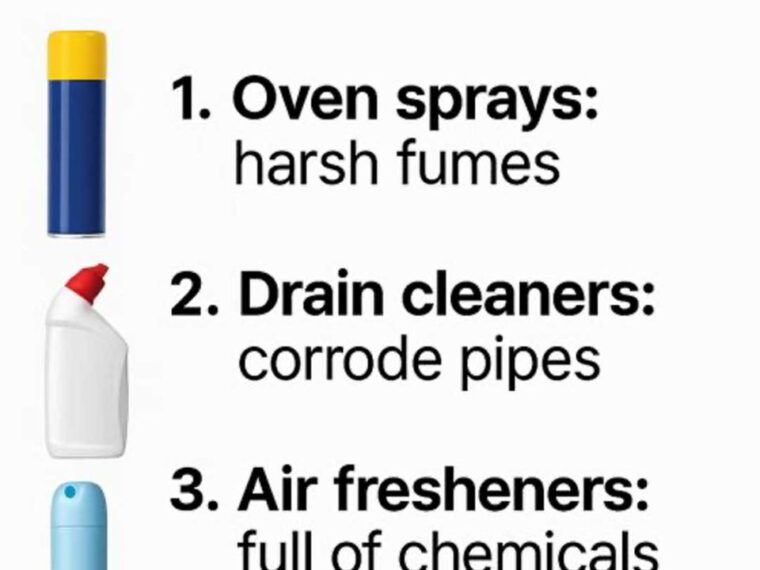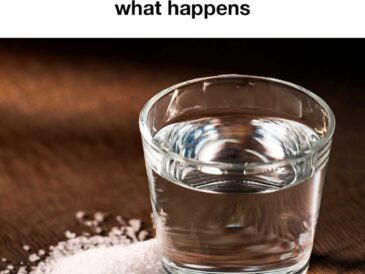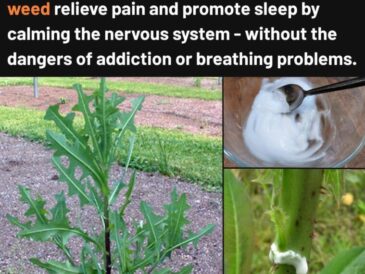In our quest to maintain spotless homes, many of us unwittingly turn to cleaning products that promise to make our lives easier and our living spaces more sanitary. While these products may boast quick results, they often contain toxic ingredients that pose significant health risks and environmental concerns. Understanding the hidden dangers lurking in these common household cleaners is crucial for making informed choices that benefit both our health and the planet.
As we become more conscious of the chemicals we bring into our homes, it’s important to scrutinize the labels on our cleaning supplies. Many popular products contain harsh chemicals that can lead to respiratory issues, skin irritation, and even long-term health problems. Moreover, the environmental impact of these substances can be devastating, contributing to pollution and harming wildlife. This article will explore ten toxic cleaners you should stop using immediately and suggest safer alternatives.
1. The Hidden Dangers of Oven Sprays
Oven sprays are a staple in many households for their ability to cut through grease and grime effortlessly. However, these products often contain corrosive ingredients such as sodium hydroxide (lye) and butoxydiglycol, which can cause severe chemical burns if they come into contact with the skin or eyes. Inhalation of fumes during application can lead to respiratory distress, especially in individuals with pre-existing conditions like asthma.
Moreover, the residues left behind after cleaning can volatilize when the oven is heated, releasing potentially harmful vapors into the air. Long-term exposure to these chemicals can increase the risk of chronic respiratory problems, making it crucial to seek out safer alternatives like baking soda and vinegar, which can effectively clean ovens without the associated health risks.
2. Pipe Damage from Drain Cleaners
Drain cleaners are marketed as quick solutions for clogged pipes, but they often contain highly corrosive substances such as sulfuric acid or sodium hydroxide. While these chemicals can dissolve organic matter quickly, they can also erode and weaken pipes, leading to costly plumbing repairs over time. The heat generated during the chemical reaction can cause PVC pipes to warp, and repeated use may lead to leaks or burst pipes.
Additionally, the toxic fumes released during use pose health risks, necessitating proper ventilation. Instead of relying on harsh chemicals, consider using mechanical methods like a plunger or a plumber’s snake, or natural solutions like a baking soda and vinegar mixture, to clear blockages without damaging your plumbing system.
3. The Chemical Cocktail in Air Fresheners
Air fresheners, whether in spray, gel, or plug-in form, are designed to mask unpleasant odors, but they often introduce a cocktail of volatile organic compounds (VOCs) into your home environment. Common ingredients such as phthalates, benzene, and formaldehyde have been linked to respiratory issues, hormone disruption, and even cancer.
The scents from air fresheners can trigger allergies or asthma attacks, especially in sensitive individuals. To maintain a fresh-smelling home without the health risks, consider using essential oils or natural alternatives like baking soda and activated charcoal, which can absorb odors without emitting harmful chemicals.
4. Slippery Hazards of Floor Polish Sprays
Floor polish sprays promise to leave surfaces gleaming, but they often contain silicones and acrylic polymers that can create a dangerously slick surface. This slipperiness poses a significant fall risk, especially for children and the elderly. Additionally, the solvents used in these products can emit VOCs, contributing to indoor air pollution.
Prolonged exposure to VOCs can lead to headaches, dizziness, and respiratory problems. To achieve a polished look without the associated dangers, consider using natural oils like olive or coconut oil, which can enhance wood’s natural shine while providing a non-slip finish.
5. Health Risks of Ammonia-Based Glass Cleaners
Ammonia-based glass cleaners are popular for their streak-free finish, but ammonia is a potent irritant that can affect the eyes, skin, and respiratory system. Inhaling ammonia fumes can exacerbate asthma symptoms and lead to coughing, wheezing, and lung irritation. Mixing ammonia with other cleaning agents, such as bleach, can produce toxic chloramine vapors, which are extremely hazardous.
To clean glass safely, consider using a mixture of vinegar and water. This simple solution is effective at cutting through grime and leaves surfaces sparkling without the harmful side effects of ammonia.
6. The Environmental Impact of Chlorine Bleach
Chlorine bleach is a powerful disinfectant, but its environmental impact is significant. When released into waterways, bleach can form harmful byproducts like dioxins and furans, which are toxic to aquatic life and can persist in the environment for decades. The production and disposal of bleach contribute to the formation of harmful gases such as chlorofluorocarbons (CFCs), which deplete the ozone layer.
In addition to its environmental toll, bleach is highly irritating to the skin, eyes, and respiratory system. To disinfect without damaging the environment, consider using hydrogen peroxide or vinegar, both of which offer antimicrobial properties without the same level of toxicity.
7. Skin Irritation from Antibacterial Soaps
Antibacterial soaps contain chemical agents like triclosan and triclocarban, which have been linked to skin irritation and hormone disruption. These chemicals can also contribute to antibiotic resistance, making bacterial infections harder to treat. The FDA has acknowledged that antibacterial soaps are no more effective than regular soap and water at preventing illness.
For a safer alternative, opt for plain soap and water, which effectively cleanse the skin without introducing harmful chemicals. If additional antibacterial action is needed, consider using essential oils like tea tree or lavender, which have natural antimicrobial properties.
8. Toxic Residues in Carpet Cleaners
Carpet cleaners often contain a mix of harsh solvents, detergents, and fragrances that can leave behind toxic residues. Ingredients like perchloroethylene and naphthalene are known carcinogens and can remain in carpets, releasing fumes over time that contribute to indoor air pollution.
Exposure to these chemicals can lead to headaches, dizziness, and respiratory issues. To clean carpets safely, consider using a steam cleaner with plain water or a mixture of vinegar and baking soda. These methods can effectively lift dirt and stains without leaving harmful residues behind.
9. Harmful Effects of Mothballs
Mothballs are used to protect clothing from moth damage, but they contain chemicals like naphthalene and paradichlorobenzene, which are toxic to humans and pets. Inhalation of vapors can cause headaches, dizziness, and respiratory problems. Long-term exposure has been linked to liver and kidney damage.
Instead of using mothballs, consider natural repellents like cedar chips, lavender sachets, or airtight storage containers to protect clothing without the associated health risks.
10. The Safety Concerns with Furniture Polish Sprays
Furniture polish sprays can add shine to wood surfaces, but they often contain solvents and propellants that release VOCs into the air. These chemicals can irritate the respiratory system and contribute to indoor air pollution. Additionally, the buildup of polish can attract dust and dirt, necessitating more frequent cleaning.
For a safer alternative, use a mixture of olive oil and lemon juice, which can nourish wood and provide a natural shine without harmful chemicals.
11. Risks of Using Toilet Bowl Cleaners
Toilet bowl cleaners often contain hydrochloric acid or sodium hypochlorite, both of which are highly corrosive and can cause severe skin and eye irritation. Inhaling fumes during cleaning can irritate the respiratory system and exacerbate asthma symptoms. Furthermore, these chemicals can react with ammonia or other cleaning agents to release toxic gases.
To clean toilets safely, consider using baking soda and vinegar, which can effectively break down stains and odors without the health risks associated with chemical cleaners.




